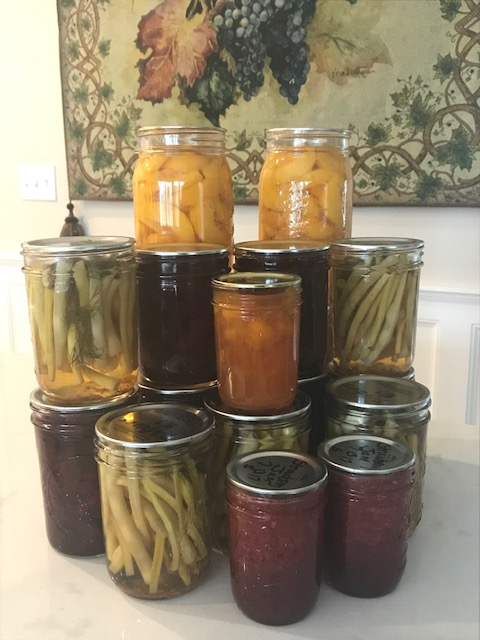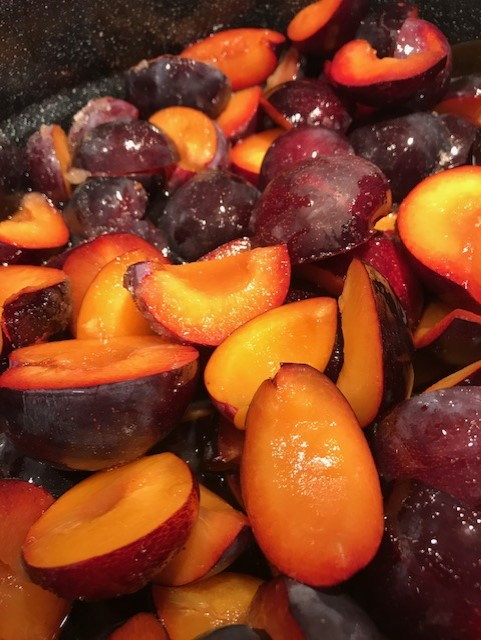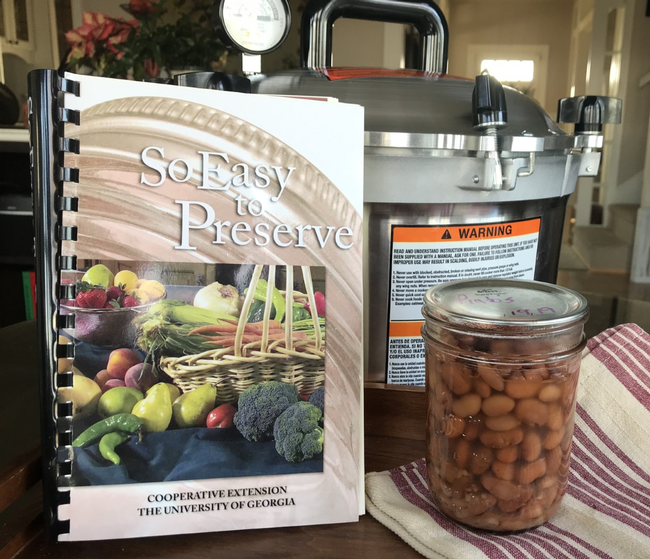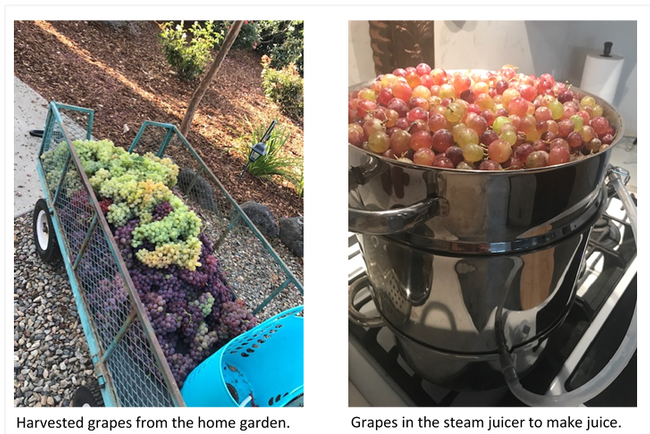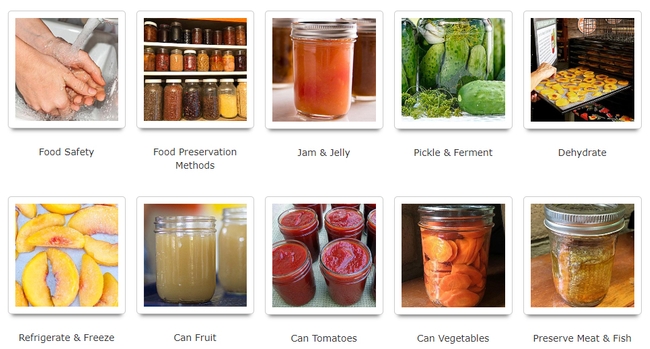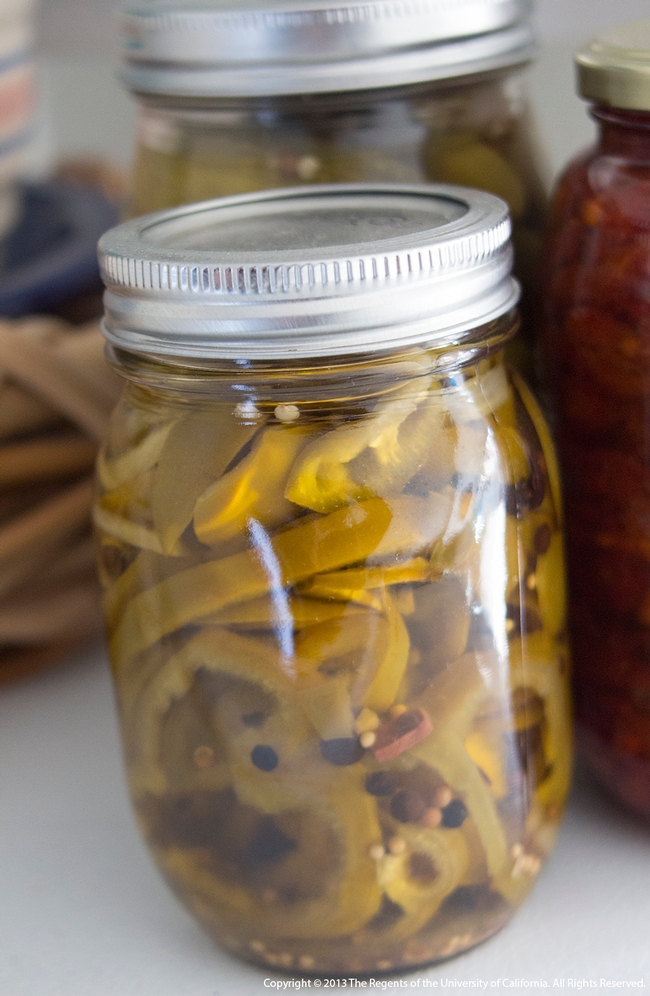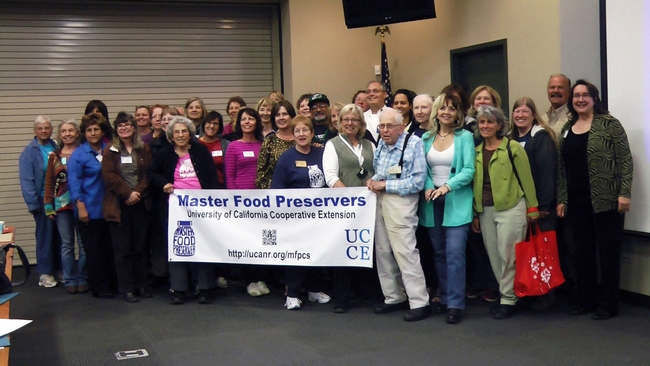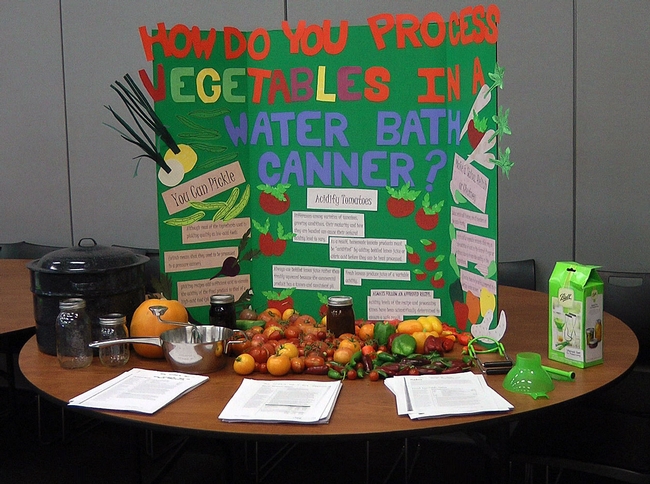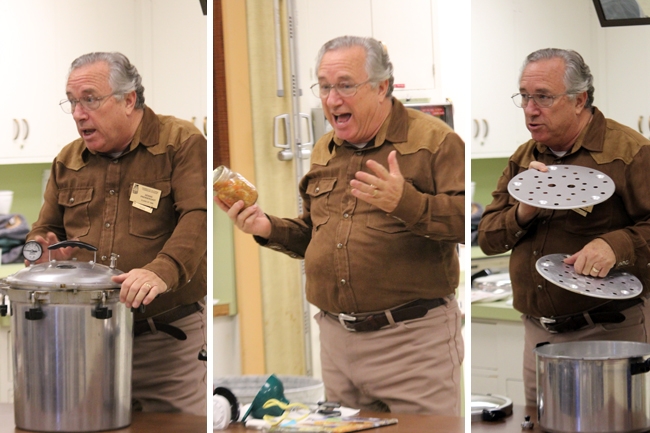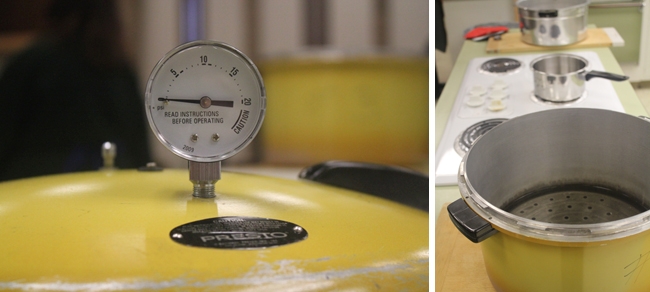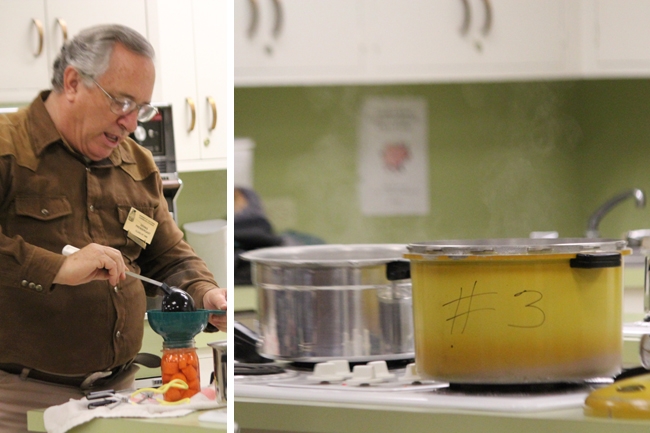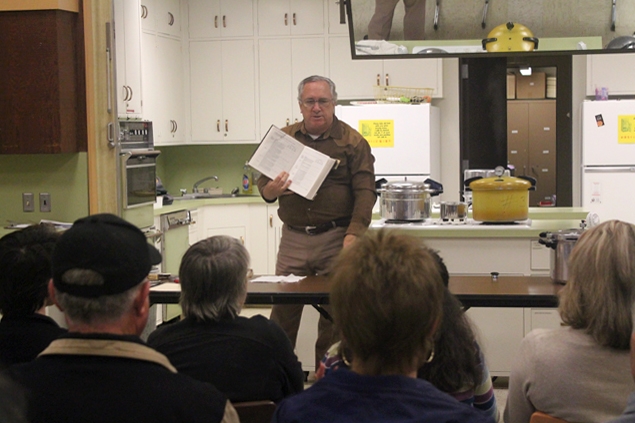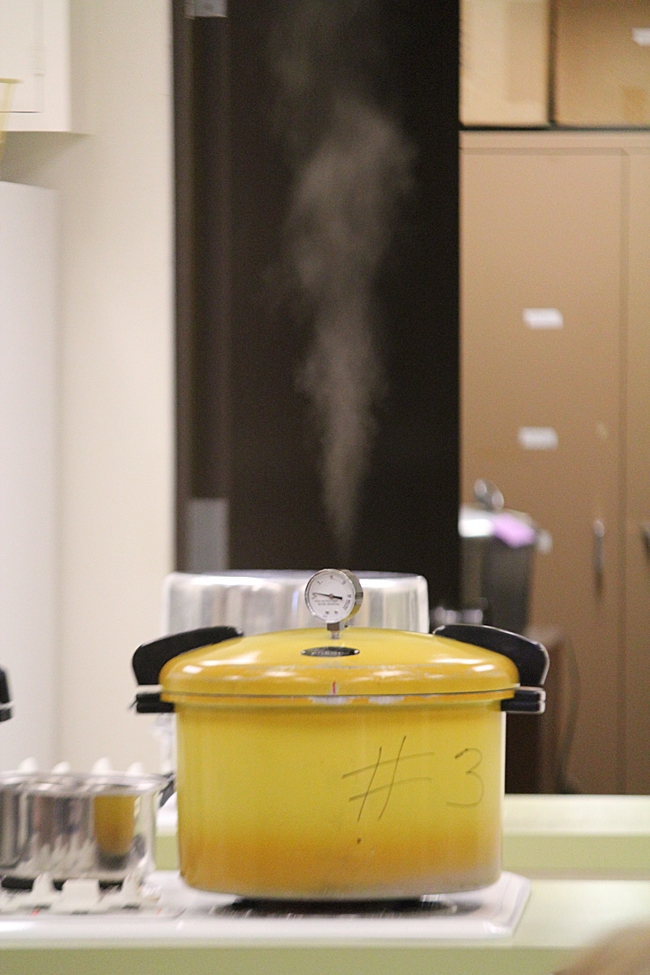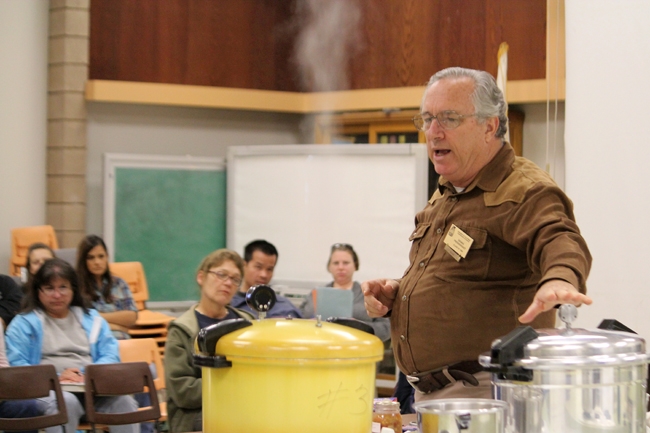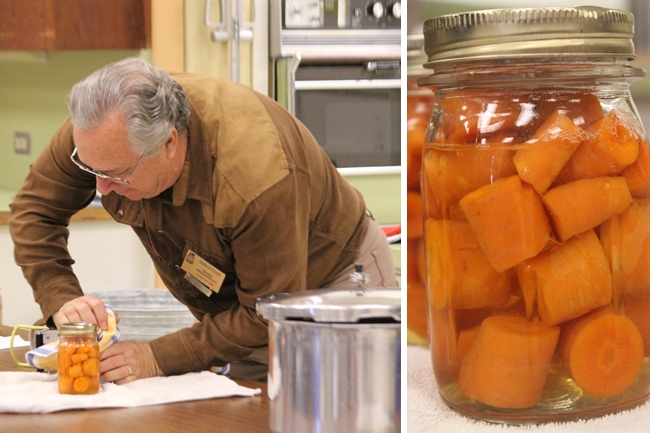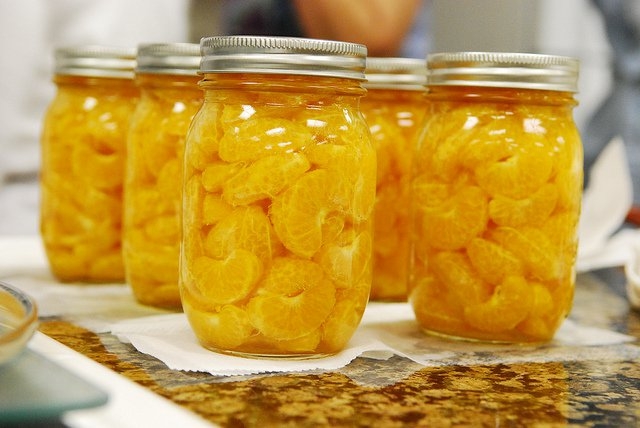Posts Tagged: food preservation
Home preservation for whole foods, plant-based lifestyles
Recently there has been increasing interest and desire to grow and preserve our own produce. In addition, there has been an increase of health-conscious families turning to WFPB lifestyles. This UC Davis article explains the differences between vegan and WFPB diets.
Home food preservation is a natural accompaniment to this lifestyle, however, misconceptions about the benefits of home canning are often overlooked for the WFBP lifestyle and therefore not utilized. There is a misconception that preserved canned fruits are loaded with sugar. Unlike vegan diets, WFPB diets do not include sugar, however, WFPB diets do include raw honey if sweeteners are desired. The UC Davis Integrative Medicine article, The real truth about sugar, supports the choice to preserve fruits without the addition of sugar. And, although unprocessed foods are encouraged, minimally processed foods like home preserving, is acceptable. Here is a great article from UC Davis Integrative Medicine - What about processed foods?
Having a small orchard with cherries, peaches, plums and apricots, as well as grapes and blueberries, I spend my summers preserving fruits with no sugar. I would freeze, can or dehydrate the fruit to enjoy during the off seasons as well as making jams and jellies using Pomona's Universal Pectin without sugar, and instead using honey to add sweetness. Preserving with Pomona's Pectin preserving cookbook is an excellent resource for canning without sugar.
Beans are a protein staple for the WFPB lifestyle. A UC Davis Integrative Medicine article explains Why beans are best and are a healthful choice for a meal or a snack. Home canning beans saves time and money. This UCCE video by Dustin Blakey is an excellent demonstration for pressure canning beans. By following the recipe in the book So Easy to Preserve, for pressure canning beans, my beans always come out safe and perfect. Before serving, I bring the beans to a boil for 10 minutes and season for my desired taste.
Being a certified UC Master Gardener provided me the skills and knowledge to successfully grow my own produce. I often referr to my garden as “My Victory Garden for Health.” All the produce that is not eaten fresh is either canned, dehydrated or frozen using skills I learned as a UC Master Food Preserver.
We grew a large 4' x 16' bed of onions. Some onions were dehydrated, which was a great advantage. Snap peas, bush beans, asparagus, beets for pickling, carrots, tomatoes, and sweet corn were either pressure canned, blanched or frozen. Vegetable soup was made and canned using the So Easy to Preserve instructions.
I am not advocating that this lifestyle is for everyone since after almost one year I found my way to a hybrid form of WFPB. However, I will continue to use my UC Master Food Preserver skills to home preserve produce that is sugar free and healthy, knowing that my home preserved food is safe since I have followed recipes and procedures tested for home food preservation.
For more information about the UC Master Food Preserver Program, including the Food Preservation Video Library, visit mfp.ucanr.edu.
Reliable home food preservation videos now available on new website
Americans' interest in traditional homemaking activities – gardening, cooking, baking bread and canning – has risen dramatically over the last few months, according to Google Trends.
Getting reliable information is particularly important when it comes to home food preservation. But internet search results don't always display research-based information at the top. Using the wrong procedure won't qualify as a hilarious Pinterest Fail; it can be fatal.
To make reliable home food preservation how-to videos easy to find, a team of UC Cooperative Extension professionals and volunteers reviewed and aggregated research-based food preservation videos produced by Cooperative Extension programs across the nation on one website – http://ucanr.edu/MFPvideolibrary.
“As far as we can tell, this site is the only website with a full collection of food safety and food preservation videos from the Cooperative Extension system,” said UCCE Master Food Preserver coordinator Sue Mosbacher. In partnership with states, counties and universities, the USDA's Cooperative Extension system provides higher education to farmers, ranchers, communities, youth and families. In California, UC Cooperative Extension is part of UC Agriculture and Natural Resources.
The videos are divided into 10 categories: food safety, food preservation methods, jam & jelly, pickle & ferment, dehydrate, refrigerate & freeze, can fruit, can tomatoes, can vegetables and preserve meat & fish.
The UC Cooperative Extension Master Food Preserver Program trains and certifies volunteers to teach the public about food preservation techniques and safety. Certified UC Master Food Preservers typically hold community classes to extend the information. During the COVID-19 crisis, in-person classes have been canceled, so video-based learning is critical to educating families who are interested in the craft.
Mosbacher, who leads the UC Master Food Preserver Programs in Sacramento, Amador and Calaveras counties, coordinated the collection and developed the website, along with Jan Fetler, a UC Master Food Preserver volunteer in Sacramento County. Orange County's UC Master Food Preserver coordinator Colleen Clemons created a list of all state Extension offices with food preservation videos on YouTube and gathered the YouTube addresses. The video list was divided among 15 volunteers who reviewed and selected the most appropriate content for the collection. El Dorado County's UCCE office staff administrator Robin Cleveland and Nancy Star tested all the website links. San Luis Obispo County UC Master Food Preserver coordinator Dana Ravalen is writing the video descriptions.
Dustin Blakey, director of UC Cooperative Extension in Inyo and Mono counties and coordinator of the local Master Food Preserver volunteers, created one of the videos in the collection. In seven minutes, Blakey outlines the process of preserving dry beans. (View the video below.)
“Right now, with people losing their jobs, if you have a pressure canner, you can buy a five-pound bag of beans for $5 and make 16 cans of beans,” Blakey said. “If you have the equipment and jars, it's a great way to preserve the food and then this summer, you have it ready to go.”
Blakey said he and his team will be producing more home food preservation videos in the future.
Master Food Preserver program in California is on the upswing
Home food preservation had been simmering on the back burner for years, but growing interest in eating healthy, local food and a revival of America's can-do spirit has it jamming once again.
The UC Cooperative Extension Master Food Preserver (MFP) program is following the same trend. Established in the 1980s, a small contingent of volunteers offered occasional classes through the years. But a reawakening that spurred rapid program growth was enough to prompt UC Cooperative Extension to hold the first-ever statewide Master Food Preserver conference this month in Stockton.
Master Food Preservers are volunteers who teach people in their communities how to preserve food safely and nutritiously. Nine California counties now have MFP programs and more are planned. Last year, MFP volunteers clocked 15,000 hours teaching courses on safe food preservation. The statewide conference was designed to give the volunteers a networking opportunity, updates on the latest food preservation techniques and tools, and energy to return home and meet the increasing public demand.
“There is a huge resurgence of interest in food preservation among young people,” said Missy Gable, the co-director of the UCCE statewide Master Food Preserver program and director of its Master Gardener program. “People whose parents and grandparents didn't preserve food now want to learn how.”
At the conference, chef Ernest Miller, a certified Master Food Preserver in Los Angeles County, outlined the storied history of food preservation, which he says predates agriculture.
“You decide to grow food. You're successful. You have a big harvest and throw the first harvest party,” Miller said. “One week, two weeks later, all the food goes bad. You starve to death and the experiment is over. You need to know how to preserve food before you can switch from hunting and gathering to agriculture.”
Miller believes food preservation is the foundation of civilization and the key to the world's cultures.
“Where would the French be without cheese? What would the Japanese be without sunomono, the Koreans without kimchee, the Germans without sauerkraut and beer?” he asked.
A proponent of all types of food preservation, Miller can rattle off a litany of processes in a few seconds.
“We teach canning, pressure canning, freezing, drying, pickling, fermenting, curing, brewing, smoking, charcuterie, cheese making and emergency food storage,” he said to cheers from the audience.
Three Master Food Preservers shared proven teaching techniques with their colleagues at the conference.
Sue Mosbacher, UCCE program representative for the MFP program in Amador and Calaveras counties, said she always begins a class on pressure canning by asking who's afraid of the process. Many hands go up and members of the audience tell of times their grandmothers' pressure cookers exploded.
“What were they cooking? Split pea soup and the peas clogged the vent. With pressure canning, we're just using water,” Mosbacher said. “The first thing I do is reassure them that a pressure canner is a very safe tool to use.”
Mosbacher gets her students excited about canning their own beef stew by trying to read the ingredients on a store-bought stew can, and then the ingredients in her home-preserved stew.
“Potatoes, carrots, onions, beef and a little broth, that's it. And it's delicious,” she said.
MFP Cheryl Knapp of El Dorado County showed that food preservation isn't limited putting up plain fruit and vegetables for future consumption. In her classes, she teaches how to make homemade spice blends using dried peppers and other vegetables from the garden.
MFP Linda Bjorkland of Sacramento County demonstrated an automatic jam and jelly maker she received as a gift. At first she was skeptical, but tried it.
“You just sprinkle the pectin, add a half teaspoon of butter, and the strawberries,” Bjorkland said. “What's the next step? Turn it on. Can you believe that?”
A hot plate heats the mixture evenly and a blade inside the pan stirs continuously. When the maker beeps, add sugar.
“It continues for 17 minutes, and your jam is done,” Bjorkland said. “It's quick and easy. That's the kind of thing your public will want to know about.”
The UCCE Master Food Preserver program is setting up a statewide steering committee, will soon launch a new, completely updated website, and a team of MFP volunteers and UC nutrition specialists are writing a comprehensive MFP handbook.
“This is a labor of love,” Gable said. “I'm thrilled about the developments in our program.”
Peek inside a UC Master Food Preserver kitchen
I brought my camera with me to a Master Food Preservers class Saturday at UC Cooperative Extension Sacramento County on pressure canning. In case you’ve been thinking about participating in a Master Food Preservers class, here’s a peek inside the Sacramento demonstration kitchen:
“Cooking is a whole different ball game from canning — a whole different science,” Prendergast said. He's been a UC Master Food Preserver since 1995, and regularly teaches the monthly Saturday morning classes in Sacramento county. Next month's Saturday morning class will be on dehydrating, 10 a.m. to 12 p.m., Dec. 10.
UC Master Food Preservers is a volunteer organization structured in a way similar to UC Master Gardeners. Master Food Preserver candidates complete training to become knowledgeable in food preservation and then are required to volunteer time sharing their knowledge with the public by teaching classes and answering questions.
UC Cooperative Extension currently has Master Food Preservers in four counties:
- Sacramento
- El Dorado (now known as Central Sierra)
- Los Angeles
- San Bernardino
In Sacramento County, the Master Food Preservers offer a monthly class on Saturday mornings that focuses on techniques of a specific preservation process – either water-bath canning, pressure canning or dehydrating. Once a month on Wednesday evenings, the group offers classes that focus on preserving specific fruits or vegetables.
This Wednesday’s class is on “Fall Fruits and Winter Squash” which will include quince and pomegranates among others. The class is 6:30 – 8:30 p.m. at the UC Cooperative Extension office, 4145 Branch Center Road in Sacramento; registration to attend is $3.
Home preserved foods: Nutrition friend or foe?
This time of year, many food preservation enthusiasts are hard at work in their kitchens canning, freezing, drying and fermenting. They are scouring their recipe books (USDA approved, of course!) for interesting and delicious ways to take fruits and vegetables at the peak of their freshness and preserve them so they may be enjoyed year-round. For the home food preserver, this hard work will pay off for months to come, and lucky family members and friends will delight in the delicious gifts that are sure to come their way.
When we think of preserved food, however, we often conjure up thoughts of sticky, sweet jams and jellies and salty pickles and sauerkraut. The treats from the kitchen of a home food preserver are tasty, but it's not exactly health food, right? Well, you might be surprised to learn that this is not necessarily the case.
The many benefits of fermentation
Typical fermented foods include yogurt, soy sauce, miso, tempeh, buttermilk, pickles and sauerkraut. Fermented foods have been used for centuries in almost every culture for long- term food storage, to flavor foods and in times of food shortages. These foods offer a wide variety of health benefits due to the process of fermentation, which actually increases nutrients such as folic acid, vitamin B12, nicotinic acid, riboflavin, and thiamine. Fermented foods also have "friendly bacteria" or probiotics, that are similar to the beneficial microorganisms found in our gut. More research is needed in this area, but some studies show promising results in treating bowel diseases and stimulating the immune system with probiotics. Additionally, the process of fermentation partially brakes down lactose, making it easier for lactose-intolerant people to consume milk-based products such as yogurt.
Cancer-fighting phytochemicals
When food is cooked, dried, frozen and reheated, there is always a loss of nutrients.
Vitamins A, C and B are often degraded through the cooking process, however, some cooked vegetables actually supply more cancer-fighting antioxidants than their raw forms.
For instance, researchers at Cornell University found that heat from cooking actually increases lycopene content and overall antioxidant activity in tomatoes. Lycopene is a naturally occurring chemical (or "phytochemical") found in tomatoes that decreases risk of cancer and heart disease. So what does this mean, exactly? Is it better to eat our veggies raw or cooked? Well, raw tomatoes are undoubtedly a great source of Vitamin C, but it's also a good idea to eat some canned or cooked tomatoes to benefit from the high levels of lycopene and antioxidant activity. This is true for many other vegetables in our diet, as well.
What about all that sugar and salt?
Sure, jams and jellies are often made with a good amount of sugar, and we need to use salt to ferment pickles and sauerkraut, but there are ways to preserve food without high amounts of salt or sugar.
We can't remove the sodium from fermented pickles or sauerkraut (unless we rinse them before eating), but sodium can be removed from fresh-pack pickles. You can find delicious, low-sodium recipes on the National Center for Home Food Preservation website (http://www.uga.edu/nchfp/how/diet_pick.html). One concern we may have about canned vegetables (whether homemade or store bought) is that they are often high in sodium. Well, the salt in canned food is only used to season the food, it is not necessary for safety. So, if you desire to keep sodium levels low, you can omit the salt when canning and use salt substitutes when you're ready to eat the food. Cooking with garlic and fresh or dried herbs is also great way to add flavor to a low-sodium canned food.
There are a variety of fruit spreads that can be made lower in sugar and calories than regular jams and jellies. There are also two types of modified pectin that can be used that require less sugar. Recipes for low-sugar fruit spreads can be found on the National Center for Home Food Preservation website (http://www.uga.edu/nchfp/how/can7_jam_jelly.html).
You can also use gelatin as a thickening agent in low-sugar recipes, but these fruit spreads must be refrigerated and used within a month or so, rather than canned for long-term storage.
Fruits can also be canned more healthfully in water or 100% fruit juices, rather than sugary syrups. These fruits must be ripe but firm and prepared as a hot pack. Refer to the USDA Complete Guide to Home Canning for more information. Splenda is the only sugar substitute that can be added to covering liquids before canning fruits. Other sugar substitutes can be added when serving.
Enjoy the fruits of your labor
The next time you enjoy a jar of home canned vegetables or fermented pickles, think cancer- fighting antioxidants and friendly bacteria for your gut. Not only are you consuming produce that was preserved at the peak of its freshness, but you are certainly doing your body some good!


